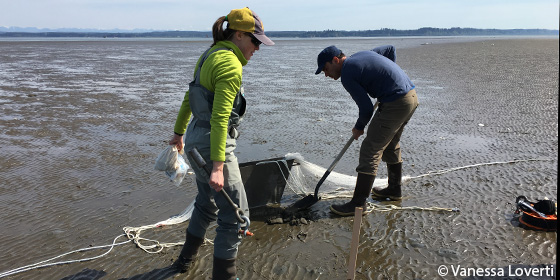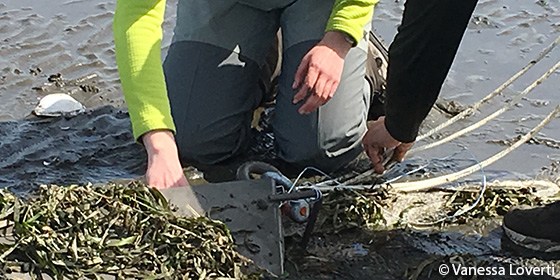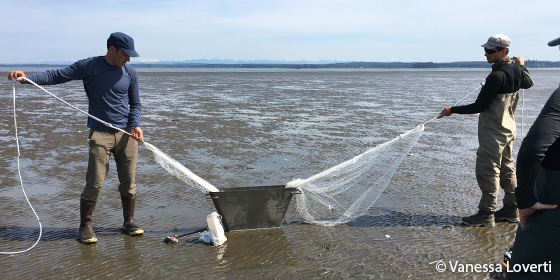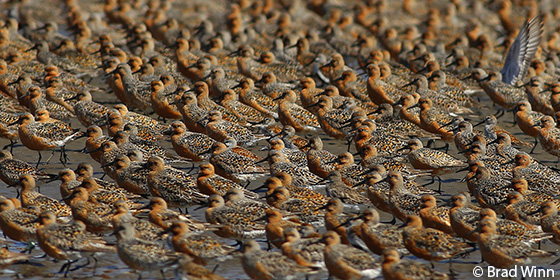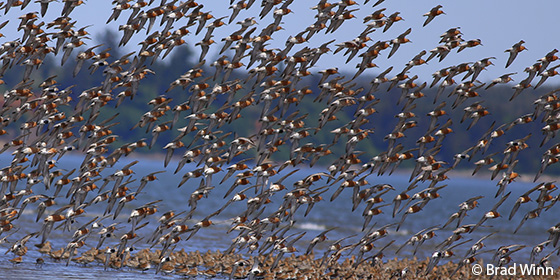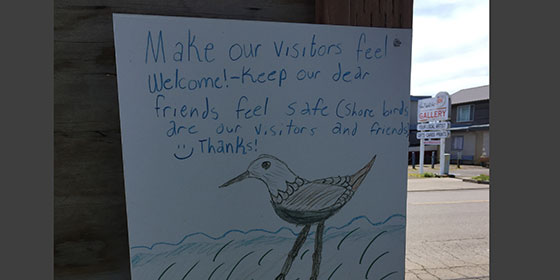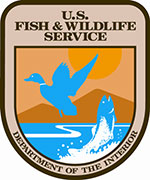Linking Sites, Linking Communities
Pacific Flyway Exchange
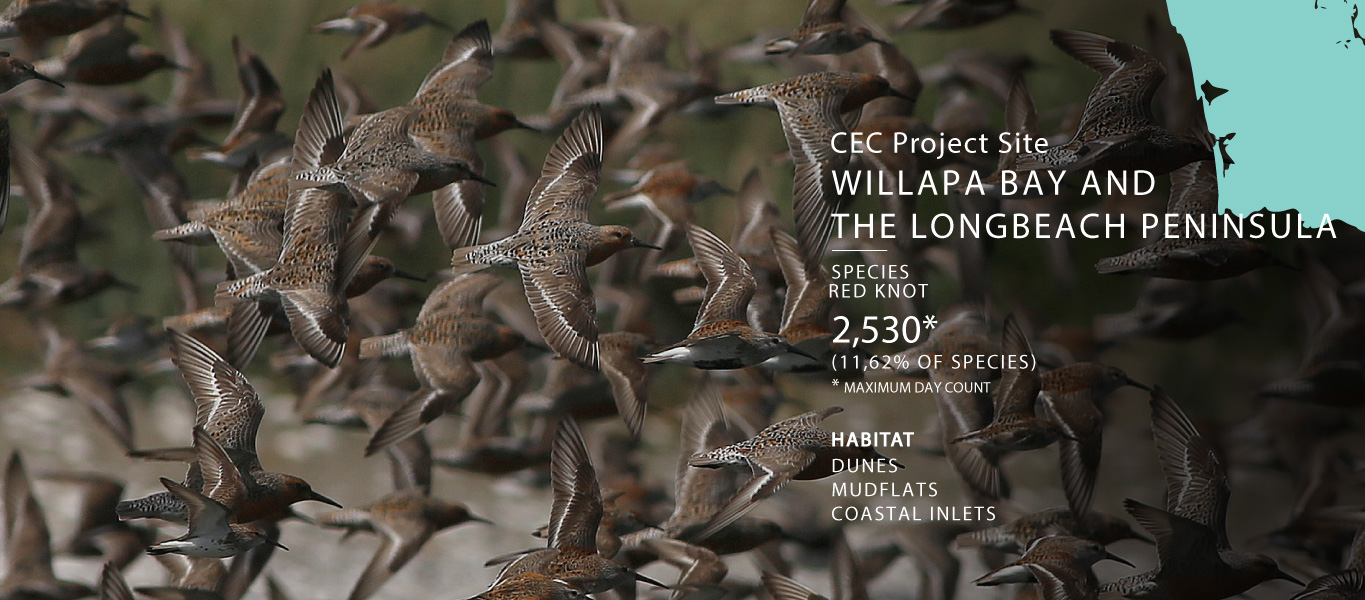
Washington, United States
Willapa Bay and the Long Beach Peninsula represent the largest remaining tidal mudflat and coastal salt marsh habitat in southwestern Washington and the second–largest estuary on the United States Pacific coast.
This long stretch of relatively pristine coastline provides excellent foraging and resting conditions for hundreds of thousands of migrating shorebirds each spring, as well as nesting snowy plovers on Long Beach peninsula.
Key Objectives
Key objectives for this project site were the nomination of the site as a Western Hemisphere Shorebird Reserve Network (WHSRN) Landscape of International Importance and outreach to communities about the site’s significance for shorebirds. In May 2017, Willapa Bay and the Long Beach Peninsula were designated as the 97th WHSRN site, joining a handful of other sites along North America’s Pacific Coast that have been identified as critical shorebird habitat. Shorebird conservation outreach to nearby communities included classroom education and a youth sign project, whereby youth-designed shorebird conservation signs were installed on beaches and in other public places to remind visitors not to disturb feeding and resting shorebirds.
Multi-partner Program
An independent, multi-partner program to eradicate non-native cordgrass (Spartina alterniflora) has also restored nearly 8,000 acres of estuarine habitat for shorebirds and other native wildlife.
Photo Gallery
Partners
Sites in this Exchange
Copper River Delta
Alaska, USA
The Copper River Delta in Alaska is an important staging area for nearly five million migrating shorebirds in early May, and also provides nesting […]
Grays Harbor
Washington, USA
Grays Harbor is a large bay on the southern coast of Washington State used by Red Knots and many other species of shorebirds for […]
Willapa Bay and Longbeach Peninsula
Washington, USA
Willapa Bay and the Long Beach Peninsula represent the largest remaining tidal mudflat and coastal salt marsh habitat in southwestern Washington […]
Bahía de Todos Santos
Baja California, Mexico
Off the coast of Ensenada, in Baja California, Bahía de Todos Santos hosts a number of overwintering migratory birds, including roselaari Red Knots […]

Produced with support from the Commission for Environmental Cooperation – www.cec.org
The Commission for Environmental Cooperation (CEC) is an intergovernmental organization that supports the cooperative environmental agenda of Canada, Mexico and the United States to green North America’s economy, address climate change by promoting a low-carbon economy, and protect North America’s environment and the health of its citizens.
To foster North American conservation opportunities for Semipalmated Sandpipers (Calidris pusilla) and Red Knots (Calidris canutus—rufa and roselaari subspecies), the Commission for Environmental Cooperation (CEC) started an initiative to inform, engage and connect communities at key sites for these two species. This included linking sites in the Pacific flyway and the Atlantic flyway.




